|
As PDC#2 rolls at Ridgdale Permaculture, we publishing a daily blog to detail the experience for those who may be interested in what takes place at one of our trainings as we establish Scandinavia's first Keyline Designed farm & dedicated Regenerative Ag/ Permaculture Edu hub at a working farm. Daniel McGough, one of our pioneer Farm Managers joining us from Australia shares his experience of the (Un)Learning journey over the next 2 weeks. Here's Day 3... There’s something about the changing seasons of Sweden, I mean most of us live well below this latitude right? So what is the high summer like here? Stunning sunrises and sunsets, warm lake waters for a morning dip and plenty of fresh wild foods from the forest. I chat with Marcus (Swedish) over breakfast, for a 30 year old he’s got quite a life story already. Marcus grew up on a commercial farm with 9000 chickens and 800 beef cattle. Hard at work by age 10 and then leaving home for high school at 15, he trained as an army medic in Norway while studying engineering at university. Then he went into naprepathy, which is the study of which is a study in the field of manual medicine. Marcus has now found his way back to the land to the PDC at Ridgedale to learn more about nutrition and where food comes from to aid his passion for physical training. Nice one… trying to be a better human being ‘high five’, bam! Welcome to Planet Water, Richard writes on the board and we hear about an outside of the box enterprise from Tasmania where, during the 1988 Seoul Olympics, a local fella hired the roof of a local cricket (one of Australians national pastimes) ground, caught all the water running off it, ran it through a sand filter box sitting in the ground in the car park, supplied the entire Olympic contract and retired when he was one year older than Marcus. How much is 1 square metre of rainwater where you live. If I calculate 1m2 of the 1600mm of rainwater that falls in the Noosa region where I live at $2 per litre, that’s a pretty good bankroll. Discussing this issue with Henny and Max (also from Sweden) we clarify that the concept is not to imagine becoming NestLay (yes, I know), but rather to understand the value of water that falls on our land and why it is essential to make moves to try and Catch and Store it. By the way, check these out - http://www.smithsonianmag.com/innovation/this-tower-pulls-drinking-water-out-of-thin-air-180950399/) Moving on to the pH scale, a key understanding in terms of water, solubility of particular elements and waters’ relationship to the soil, we learn about typical measures used to alter pH. Adding sulphur to lower pH is one, adding lime to raise it is another. This is described as something similar to “open heart surgery” for your soil, a drastic and short sighted event. So what is doing to the life systems in the soil? Why would you engage in such a risky business? Usually, as Richard explains, to significantly alter an ecosystem at the macro level in order to suit a market demand for an introduced, or let’s says exotic, product that may not be there next year [demand]. Would it not be better to establish a local food system based on seasonal foods that actually grow there? “Stop growing things that want to die & killing things that want to live” Bill Hill 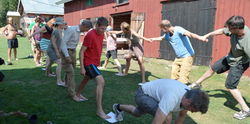 We learn about the acidity of rainwater being caused by it’s movement through carbonic acid and the Rio Negra River in Brazil and it’s highly adapted species and very specific organisms that have modified themselves to live at the outer extremes of optimum pH levels. We learn about acid rain, sulphur emissions from the other end of a light switch and how lead from exhaust fumes in old fuels sat at knee height in congested cities, the same level as children’s respiratory orifices are when they sit in strollers and we learn of lead’s connections to schizophrenia. We quickly discover that these “convenient fixes are very often not so convenient”, e.g. (plastics & fertilizers). We learn about Xeno Oestrogens and how we are guinea pigs to the 120,000 or so human created chemicals we are bathing in without a clear understanding of the long term implications. Speaking of plastic, something of interest and a topic that actually popped up in class this morning – http://news.nationalgeographic.com/news/2014/07/140715-ocean-plastic-debris-trash-pacific-garbage-patch/?rptregcta=reg_free_np&utm_content=buffer490cc&utm_medium=social&utm_source=facebook.com&utm_campaign=buffer Then we get into some serious practical applications and look at water catchment calculations, which later links to choices of water storage facilities and which are the best suited for our situation. Although we touch on dams Richard strongly advises against dashing off to start building earthen structures that may have serious physical and/or environmental impacts. Earthen dams are best left to professionals and to be considered under the advice of a very experienced operator; and while strategies like swales are often popularised within the Permaculture world, they are expensive, permanent and time consuming. Quite often a cheaper, more energy efficient (in terms of diesel and manpower) and far less imposing alternative such as Keyline plowing would be just as effective. And when partnered with a holistic management plan, could see a more rapid succession to soil regeneration. Due diligence and long observation are emphasized. We reflect on the Scale of Permanence (P. A. Yeomans) and think about how different strategies intercept different orders of Permanence in landscapes. Vital reflection for all project developers and planners. The film ‘Shark Waters’ by Rob Stewart exposes the mega global shark fin industry, which explains that at the time the film came out in 2006, the fishing rates of sharks would see Oceanic species extinct within 10 years. And as Richard introduces us to the trophic pyramid we see that sharks have been the apex predator for over 400 million years; wipe that element out and one doesn’t need to be an apex genius see the impact that will have on the rest of the ecological systems dependent on it; and that includes terrestrial systems. I’m left wondering how do you set about changing something so ingrained in a culture and which came first the recipes or the incredibly questionable business model? “We need to ask questions and we need to make sure we’re asking the right questions.” Richard inspires us to dig deeper in relation to who controls water, who creates the regulations around water? Who controls it and what are their intentions? What are the impacts on your health? Actively seek out knowledge that will benefit your understanding of your experience with the world and your ability to be of benefit to it seems to be the message. We learn about super efficient and cheap availability of old school hand pumps that double as community activators and we watch a very informative short clip from the always entertaining Brad Lancaster detailing his highly effective urban water catchment and dispersal designs. Lunch time!! 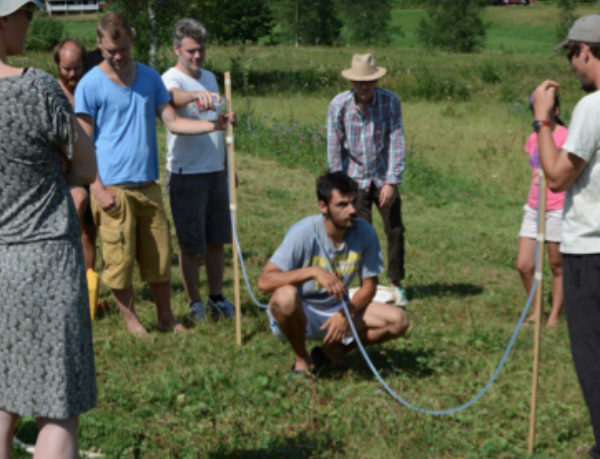 The Swedish afternoons are reaching perfect temperatures for some outdoor action so we take to the tools, learning all about finding contours and the very practical implements we use to find them. We meet the A-Frame, the incredibly handy Bunyip and the trusty self leveling laser level (definitely getting one of those when I get home). We learn the ins and outs of calibration, the appropriateness of each device across varying size landscapes and shapes and some handy tricks in turns of the multi-functionality of the bunyip that will save us plenty of hammock time. Before dinner it’s onto Keyline Design, so we head to the sand pit so Richard can build a mini watershed with it's characteristic 3 primary landscape features; main ridges, primary ridges and primary valleys. I can start to see the usual strained facial expressions associated with contour explanation occurring. Richard is a master at this game though and skillfully navigates us through the saddles and gullies to a clear understanding of land form. After dinner we see slides and broaden our understanding of the aspects of Keyline Design. A sublime design approach in it's own accord and a fantastic organizing framework for Permaculture designs of a larger scale. More to follow tomorrow as we all try our hands at patterning landscapes to optimize water distribution across the landscape.
Just as I clamber into bed, I double back for a brief stint in the sauna. Hmmm… much better. Returning from the sweat room I can see the days are getting shorter already. Looking out my window I can almost see a star and it’s only 10pm. Winter is still a long way off though but more Keyline Design and Water Layout Day is only a few hours sleep into tomorrow.
2 Comments
2/7/2024 02:43:31 am
I hope to see more updates from you. Thank you so much!
Reply
3/7/2024 10:13:55 pm
Your article was enjoyable and insightful. Thanks for encouraging comments.
Reply
Leave a Reply. |
Details
Like us on FB Below for regular updatesStay up to date with customized updates you want to receive
Upcoming coursesArchives
December 2016
Categories
All
|

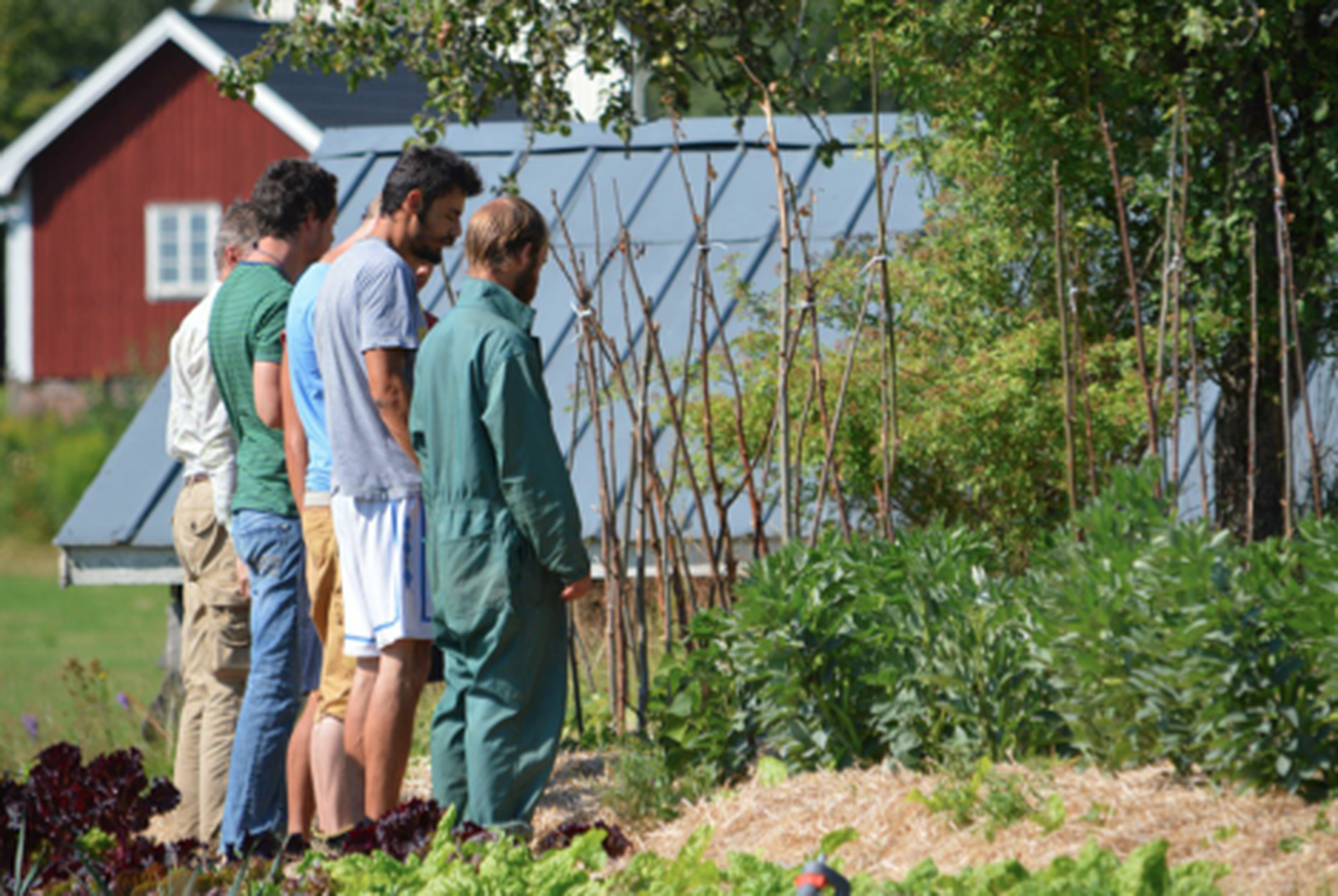
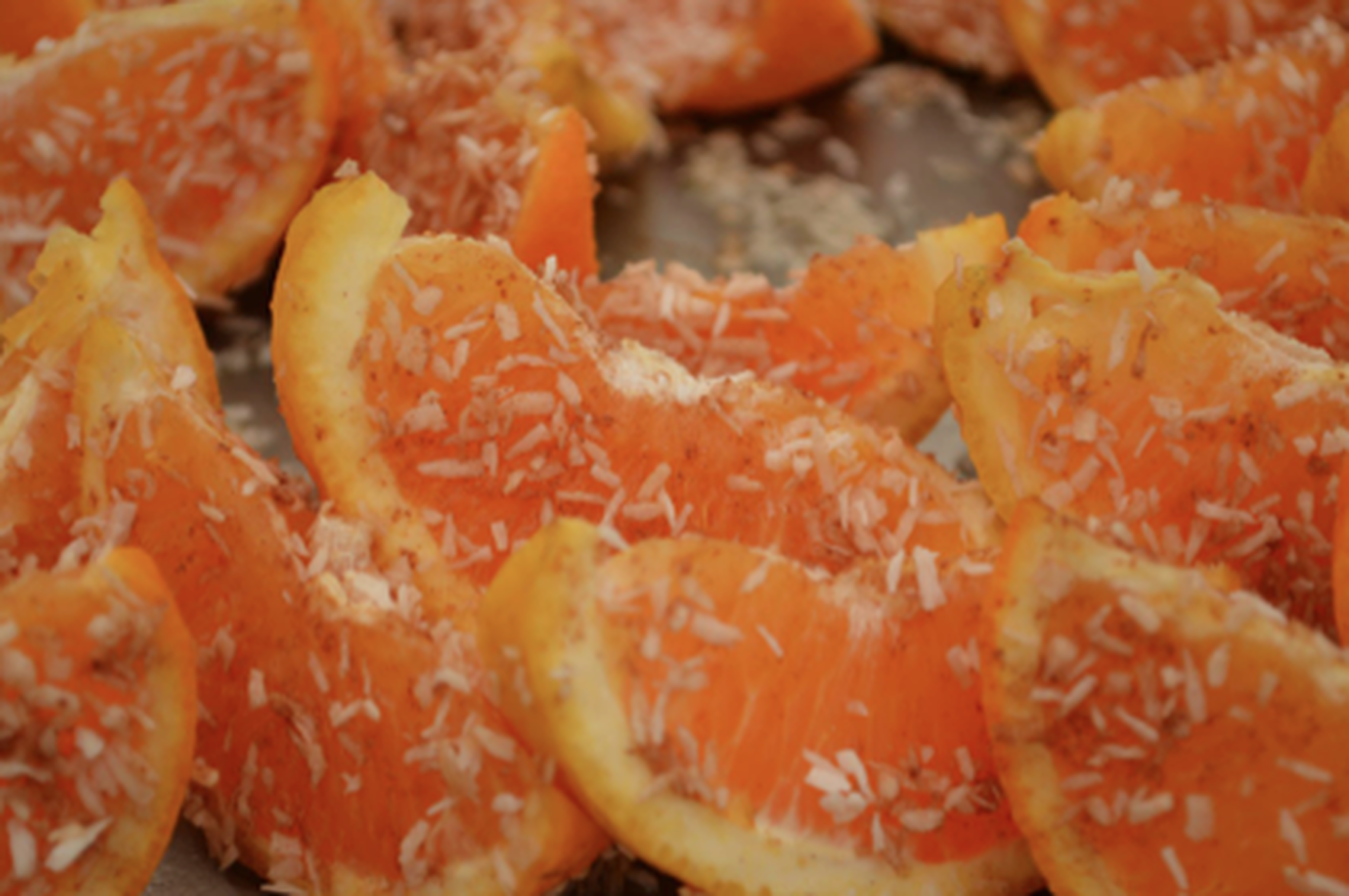
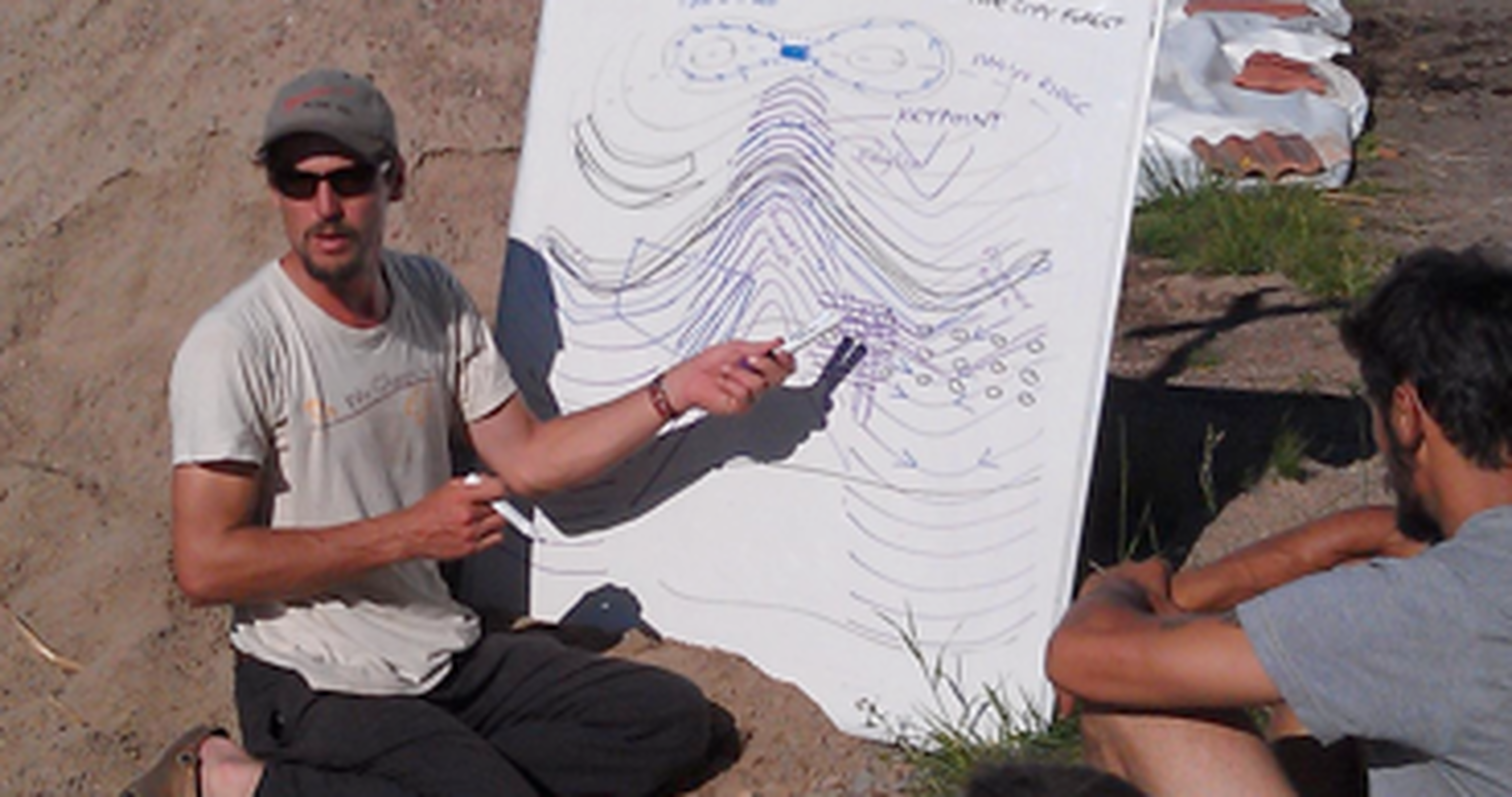

 RSS Feed
RSS Feed